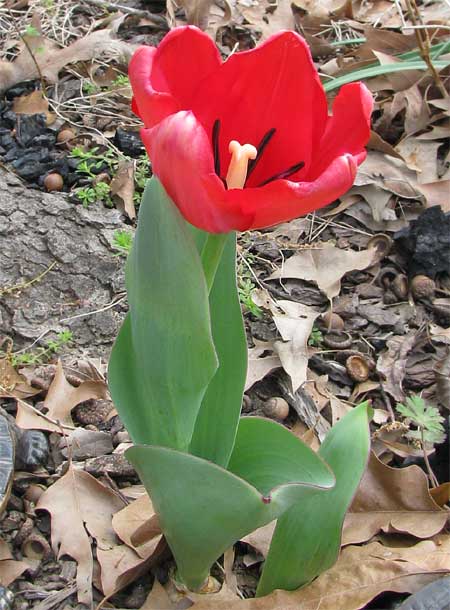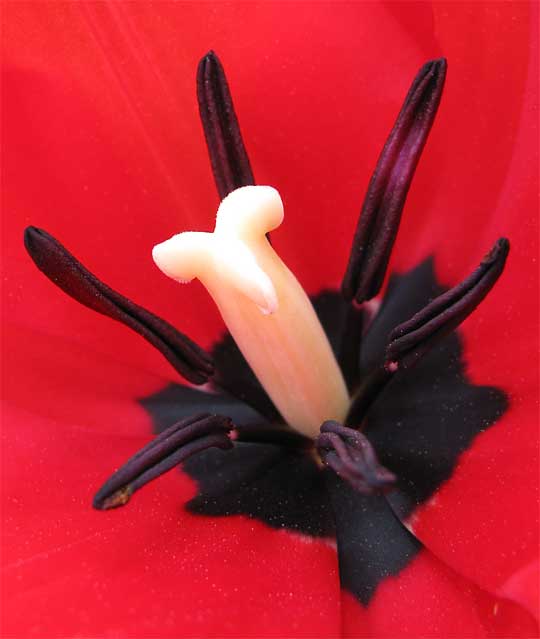Excerpts from Jim Conrad's
Naturalist Newsletter
from the March16, 2009 Newsletter, issued from the forest near Natchez, Mississippi; elevation ~400ft (120m), ~N31.47°, ~W91.29°:
TULIPS BLOSSOMING
This week Karen's tulips put on a show, as can be seen below:

On Public Radio I've heard how when tulips were introduced into China the emperor was so pleased that he had a special song written in their praise. I understand why someone seeing a tulip for the first time might want to celebrate in song. Few blossoms combine simplicity and gorgeousness so effectively.
Over 3,000 different registered varieties of cultivated tulips are recognized. The tulip genus TULIPA exists in the wild from the Mediterranean region across Asia to Japan. The commonest garden tulips are derived from just two species, T. gesneriana and T. suaveolens, though other species are often grown as "botanical tulips." The Royal Horticultural Association of Holland has grouped tulip varieties into official divisions. An illustrated chart representing the main ones can be accessed at http://www.theplantexpert.com/springbulbs/TulipIntro.html.

Above there's a close-up of a tulip's sexual parts. The white centerpiece is the female pistil consisting of stigma (the 3-armed top), style (neck beneath the stigma) and ovary (most of the bottom part). The elongate, black items radiating from the white pistil's base are male, pollen-filled anthers.
Within the huge Lily Family the genus Tulipa is distinguished by its plants emerging from bulbs, its individual leaves arising directly from the bulbs instead of from leafy stems, the "petals" (actually sections of the fused calyx and corolla called a perianth) are separated from one another at their bases, and there are no nectar-producing nectaries.